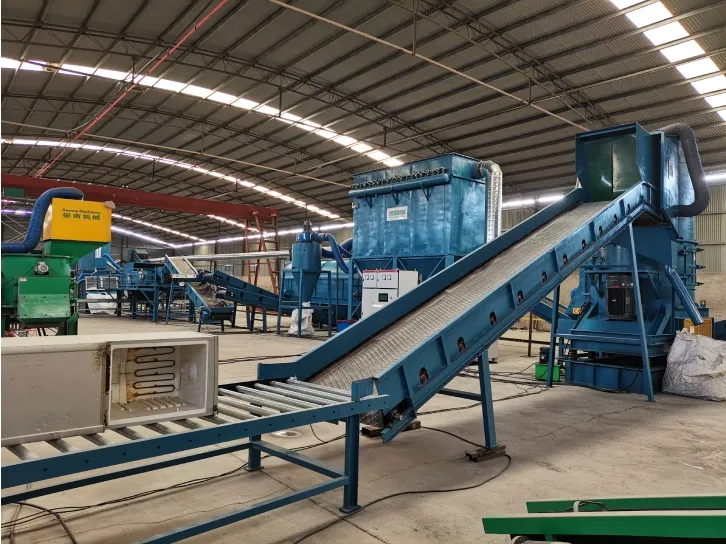
10 月 . 09, 2024 06:45 Back to list
How Metals Are Sorted in Recycling Plants
Recycling plays a crucial role in reducing waste and promoting sustainable practices, especially in the case of metals. As global demand for resources rises, efficient recycling methods have become increasingly important. Metals are not only recyclable but can also be reused multiple times without losing their inherent properties. Understanding how metals are sorted in recycling plants is essential for appreciating the complexities of the recycling process and the technologies employed to enhance efficiency.
The recycling process typically begins with the collection of scrap metal. This metal can come from various sources, including industrial waste, demolition sites, and consumer products such as old appliances, cars, and electronic devices. Once collected, the metals are transported to recycling facilities, where the sorting process begins.
How Metals Are Sorted in Recycling Plants
At recycling plants, conveyor belts transport the metal scrap to different sorting stations. Workers and specialized machines manually pick out items that do not belong, such as plastics, wood, and other contaminants that may interfere with the recycling process. This initial sorting is critical as it ensures that the remaining materials are predominantly metal and suitable for further processing.

Mechanical sorting technologies further enhance the efficiency of metal separation. One common method is the use of eddy current separators, which are specifically designed to separate non-ferrous metals from waste streams. This technology works by exposing the metal to a strong magnetic field, causing it to repel and separate from non-metal materials. This method is particularly effective for aluminum and copper, which are often found mixed with less valuable materials.
Another innovative technique employed is X-ray fluorescence (XRF) analysis. XRF machines can quickly identify the elemental composition of metals, allowing for precise sorting based on specific metal types. This technology is invaluable when dealing with complex waste streams where different metals are mixed together or when certain alloys must be separated for reuse.
Moreover, optical sorting systems utilize cameras and sensors to identify and separate metals based on visual cues. These systems can recognize different colors and shapes, providing a high level of discrimination among metal types, which helps to ensure a higher purity of the sorted metals.
After sorting, the metals are baled or shredded for easier transportation and processing. The final stage involves melting the sorted metals in large furnaces to produce molten metal, which can then be cast into new products. This recycling process not only conserves natural resources but also requires significantly less energy compared to extracting and refining metal ores from the earth.
In conclusion, metal sorting in recycling plants is a multi-faceted process that combines human labor with advanced technology. By implementing various sorting techniques, recycling facilities can efficiently separate ferrous and non-ferrous metals, ensuring that recyclable materials are processed effectively. As the demand for sustainable practices continues to grow, understanding the intricacies of metal recycling will play an essential role in promoting a circular economy and reducing environmental impact. Through improved sorting methods and technologies, recycling plants contribute significantly to the sustainable management of metal resources, paving the way for a greener future.
Latest news
Unveiling the Power of Eddy Current Separator
NewsSep.25,2024
Transform Your Home Recyclin:home metal shredder
NewsSep.25,2024
The Future of Waste Management with Recycling Line Picker
NewsSep.25,2024
The Benefits of a Metal Recycling Plant
NewsSep.25,2024
Revolutionize Material Separation with Onwang Technology
NewsSep.25,2024
Innovative Waste Management: Unveiling the MSW Sorting Plant
NewsSep.25,2024